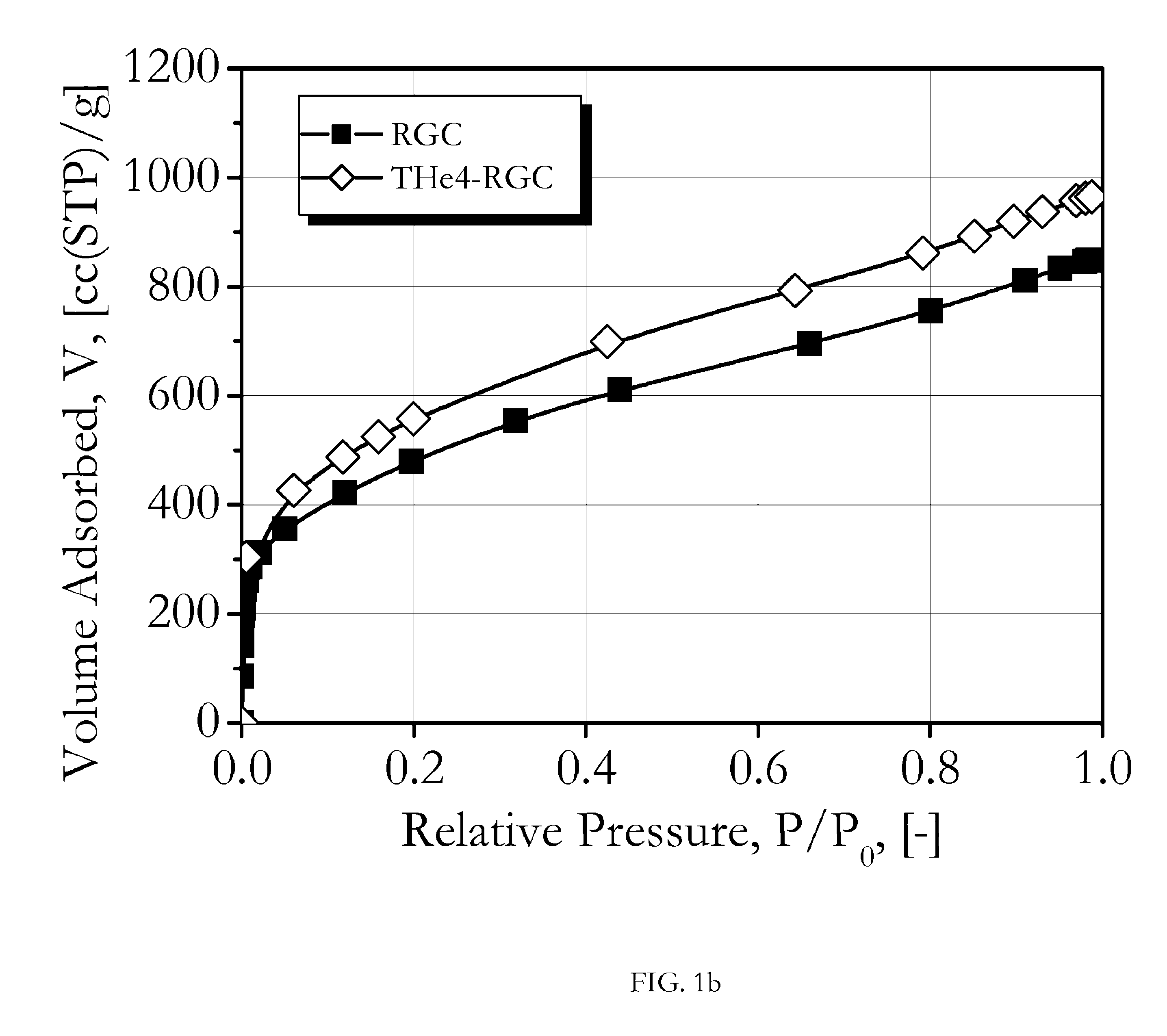Methods for treating water
a technology for treating water and water bodies, applied in the direction of multi-stage water/sewage treatment, other chemical processes, separation processes, etc., can solve the problems of incomplete removal of bacteria and viruses, general population at risk, infants and persons with compromised immune systems may be at considerable risk,
- Summary
- Abstract
- Description
- Claims
- Application Information
AI Technical Summary
Benefits of technology
Problems solved by technology
Method used
Image
Examples
example 1
Treatment of a Mesoporous and Acidic Activated Carbon to Produce a Mesoporous, Basic, and Reduced-Oxygen Activated Carbon
[0117]About 2 kg of the CARBOCHEM® CA-10 mesoporous and acidic wood-based activated carbon particles from Carbochem, Inc., of Ardmore, Pa., are placed on the belt of a furnace Model BAC-M manufactured by C. I. Hayes, Inc., of Cranston, R.I. The furnace temperature is set to about 950° C., the treatment time is about 4 hours, and the atmosphere is dissociated ammonia flowing with a volumetric flow rate of about 12,800 standard L / h (i.e., about 450 standard ft3 / h, or equivalently, about 6.4 standard L / h.g). The treated activated carbon particles are called TA4-CA-10, and their BET isotherm, mesopore volume distribution, and point of zero charge analyses are illustrated in FIGS. 1a, 2a, and 3a, respectively. Numerical values for BET, the sum of mesopore and macropore volumes, point of zero charge, BRI / BLRI, VRI / VLRI, bulk oxygen percentage by weight, and ORP are show...
example 2
Treatment of a Mesoporous and Basic Activated Carbon to Produce a Mesoporous, Basic, and Reduced-Oxygen Activated Carbon
[0118]About 2 kg of the MeadWestvaco Nuchar® RGC mesoporous and basic wood-based activated carbon particles from MeadWestvaco Corp., of Covington, Va., are placed on the belt of a furnace Model BAC-M manufactured by C. I. Hayes, Inc., of Cranston, R.I. The furnace temperature is set to about 800° C., the treatment time is 4 hours, and the atmosphere is helium flowing with a volumetric flow rate of about 12,800 standard L / h (i.e., about 450 standard ft3 / h, or equivalently, about 6.4 standard L / h.g). The treated activated carbon particles are called THe4-RGC, and their BET isotherm, mesopore volume distribution, and point of zero charge analyses are illustrated in FIGS. 1b, 2b, and 3b, respectively. Numerical values for BET, the sum of mesopore and macropore volumes, point of zero charge, BRI / BLRI, VRI / VLRI, bulk oxygen percentage by weight, and ORP are shown in Sect...
example 3
Filter Containing Mesoporous and Basic Activated Carbon Particles
[0124]About 18.3 g of Nuchar® RGC mesoporous and basic activated carbon powder (with DV,0.5 equal to about 45 μm) from MeadWestvaco Corp. of Covington, Va., is mixed with about 7 g of Microthene® low-density polyethylene (LDPE) FN510-00 binder of Equistar Chemicals, Inc. of Cincinnati, Ohio, and about 2 g of Alusil® 70 aluminosilicate powder from Selecto, Inc., of Norcross, Ga. The mixed powders are then poured into a circular aluminum mold with about 3 in. (about 7.62 cm) internal diameter and about 0.5 in. (about 1.27 cm) depth. The mold is closed and placed in a heated press with platens kept at about 204° C. for 1 h. Then, the mold is allowed to cool to room temperature, opened, and the axial flow filter is removed. The characteristics of the filter are: face area: about 45.6 cm2; filter depth: about 1.27 cm; filter total volume: about 58 mL; filter porosity (for pores greater than about 0.1 μm): about 0.43; and fi...
PUM
| Property | Measurement | Unit |
|---|---|---|
| size | aaaaa | aaaaa |
| diameter | aaaaa | aaaaa |
| diameter | aaaaa | aaaaa |
Abstract
Description
Claims
Application Information
 Login to View More
Login to View More - R&D
- Intellectual Property
- Life Sciences
- Materials
- Tech Scout
- Unparalleled Data Quality
- Higher Quality Content
- 60% Fewer Hallucinations
Browse by: Latest US Patents, China's latest patents, Technical Efficacy Thesaurus, Application Domain, Technology Topic, Popular Technical Reports.
© 2025 PatSnap. All rights reserved.Legal|Privacy policy|Modern Slavery Act Transparency Statement|Sitemap|About US| Contact US: help@patsnap.com



